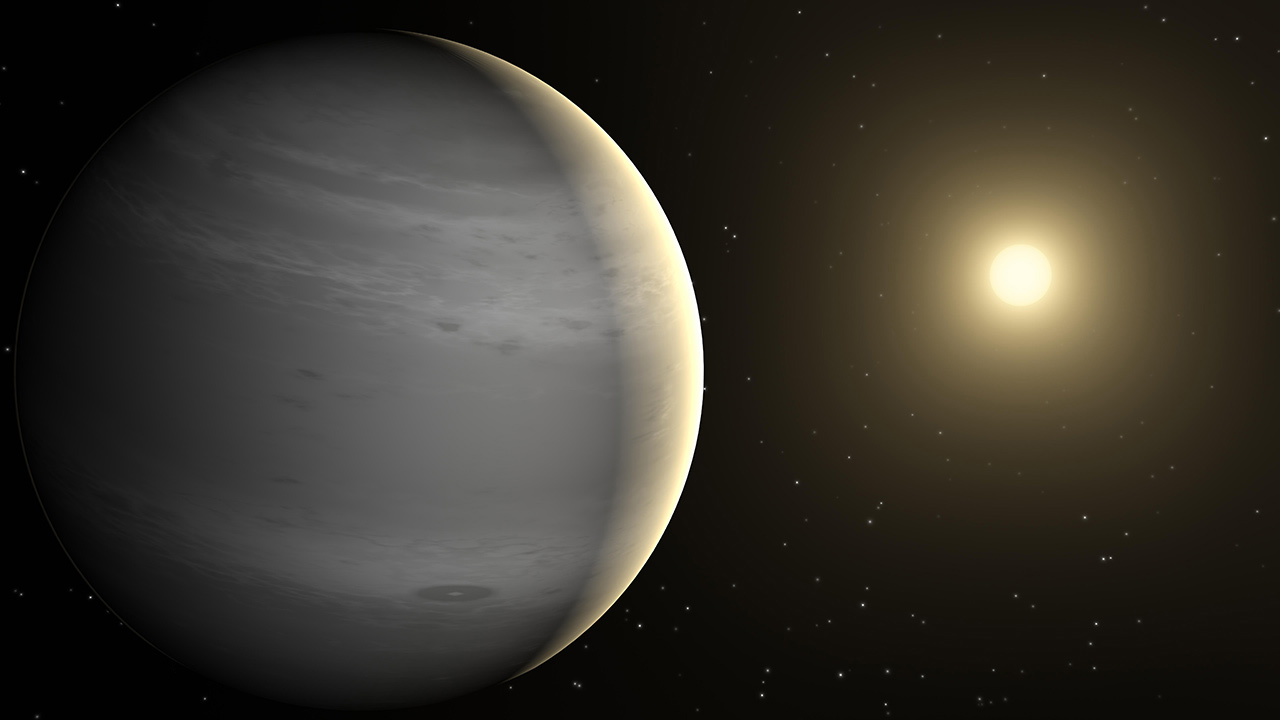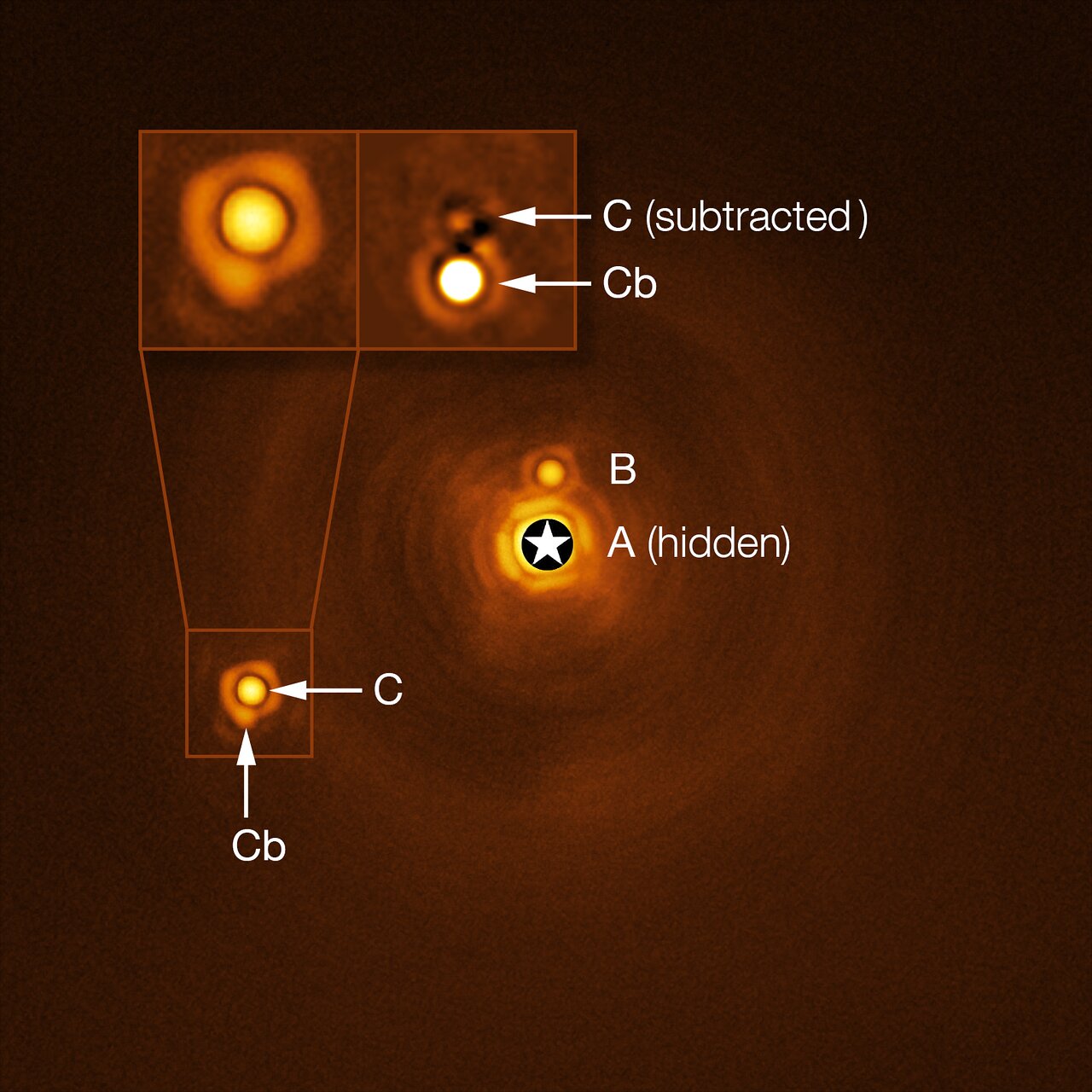Very Large Telescope surprisingly finds exoplanet lurking in 3-body star system
Astronomers made an unexpected discovery of this star when reanalyzing images taken by one of the world's largest telescopes.

The Very Large Telescope in Chile has photographed a planet orbiting a star in a multi-star system located some 480 light-years from Earth.
The exoplanet, 15 times more massive than our solar system's largest planet Jupiter, orbits a small star that itself orbits a larger star. Also orbiting the larger star is a brown dwarf, or "failed" star. Brown dwarfs are given such a gloomy moniker because these objects are not massive enough to sustain nuclear fusion in their cores like typical stars do, but are still too large to be called planets.
The system of the two stars and the brown dwarf, collectively called HIP 81208, has been known to astronomers for a long time. But the existence of an exoplanet in orbit of the smaller star came as a surprise to astronomers who recently re-examined images of the system taken earlier by the European Southern Observatory's (ESO) Very Large Telescope in Chile.
The newly discovered exoplanet is also quite massive, nearly large enough to be called a brown dwarf itself.
Related: The 10 most Earth-like exoplanets
The team's discovery marks the first hierarchical quadruple system to be found using direct imaging, ESO said in a statement. Most exoplanets are discovered through the so-called transit method, which involves observing subtle dips in a star's brightness caused by a planet passing in front of its disk from the point of the observer.
Direct imaging is, in essence, traditional photography. However, astronomers using this method to capture deep space worlds use very powerful telescopes and super-sensitive cameras to see planetary subjects directly. And in the reanalyzed images, astronomers from the Paris Observatory detected the giant exoplanet creating a blob in the ring of light surrounding its parent star.
Breaking space news, the latest updates on rocket launches, skywatching events and more!
The discovery will help astronomers further their understanding of the formation of complex systems, ESO said in the statement.

Tereza is a London-based science and technology journalist, aspiring fiction writer and amateur gymnast. She worked as a reporter at the Engineering and Technology magazine, freelanced for a range of publications including Live Science, Space.com, Professional Engineering, Via Satellite and Space News and served as a maternity cover science editor at the European Space Agency.

